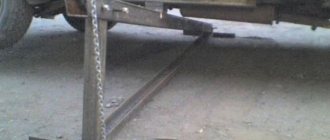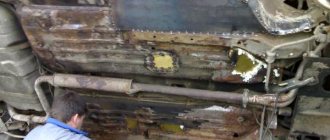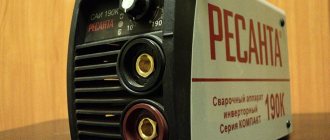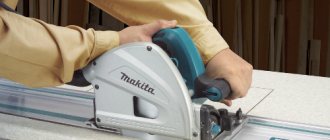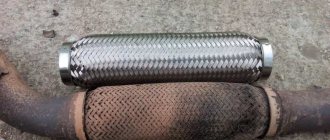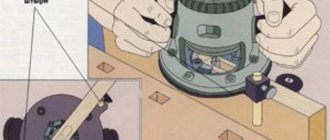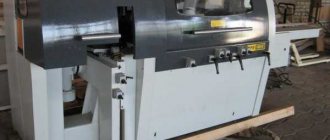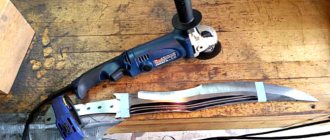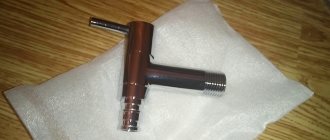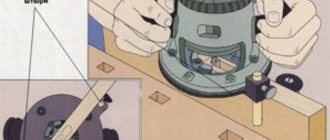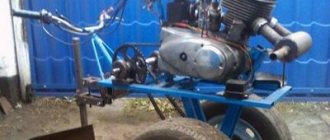There is less and less free space left under the hood of a modern car. The manufacturer strives to use every square centimeter of space around the engine. For a car mechanic, these are additional problems, since it becomes more and more difficult to get to dismantle a part, and there are more and more hard-to-reach places.
Here, I have put together a very interesting list of 19 special professional tools and devices that can help solve this problem. Of course, some tool may seem very exotic and rarely used in work, but there are some items that every auto repairman who is more or less involved in professional car repairs would want to have in his garage.
So, let's take it in order.
Comfortable bright light
LED lamp, made in the format of a “police baton” with magnetic mounts. It is very convenient to use when working under the bottom of a car or under the hood. Strong magnets will hold the flashlight in place without any problems, and the tube, which rotates along its axis by 200 degrees, can be turned exactly where you need bright light. It can operate both from the on-board network and from its own battery.
The ability to switch brightness up/down and its own rechargeable battery allow the lamp to operate autonomously for up to 8 hours. And as a bonus, this is a great option for lighting the garage during a power outage.
Wrench for hard-to-reach places
When working under the hood in the engine compartment, sometimes you have to face the problem of unscrewing and tightening a bolt, especially if it is in a hard-to-reach place and is tightened with a decent torque. And this is where a special wrench that works in ratchet mode can come in handy.
Metal stripping and stripping tool
A very interesting hand-held pneumatic tool, one might say a percussion one. In some ways it reminded me of sandblasting, only it’s much simpler. By connecting it to a compressor, you can easily remove rust, welding scale or old paint.
The principle of operation is simple - steel needles (options from 12 to 19 needles are possible) at a speed of 4000-4600 beats per minute (depending on the model) will tap out corrosive areas to clean iron. It is especially convenient when used in hard-to-reach places that cannot be reached with a brush.
When working with this tool, you should use personal protective equipment: thick gloves, goggles and headphones.
Nut breaker
Using this special tool (I call it a nut) you can break any nut if it is impossible to unscrew it. Surely any of you have encountered rusted nuts, especially when overhauling the chassis, tearing off the splines and swearing. Now everything is simple: put on the ring, bring the hardened “tooth” to the nut and twist until it simply breaks the nut. The big advantage of such a tool is that the threads on the bolt or stud are not damaged; all that remains is to remove the broken nut and run a new one with oil along the threads.
Kiwi pliers
You probably have a lot of pliers in your arsenal of tools, but you definitely don’t have these! Have you noticed that when you try to grab a small part in an inconvenient place with ordinary pliers, your hand interferes with your view of the process, blocking it? “Kiwi” pliers, so called for some resemblance to this New Zealand bird, will solve this problem - it will be more convenient to work.
Set of movable heads for hard-to-reach places
Having such a set, where each head has its own cord, you get additional opportunities when working in hard-to-reach places of the car. These heads have a much shorter body than normal ones when used with the stock kit driveshaft. There is one minus, this set is not cheap.
Set of hooks
When disassembling a car for repairs, you often have to disconnect various electrical connectors. In the latest car models, they are often combined with plastic fasteners and, when disconnected without a special tool, they can be easily damaged. With this set of hooks, almost any connector can be conveniently disconnected without breaking it.
Spark plug pliers
If you try to pull out the spark plug cap with ordinary pliers, you can easily damage the rubber cap or the wire itself. So they came up with such an interesting gadget - special pliers for removing high-voltage wires from the spark plug terminal.
Two point jack
There are times when, when performing repair work, you need to jack up two places at once. This problem can be solved by using a jack attachment with two independent (adjustable) saddles. This device is installed instead of the standard saddle. You can lengthen the arm to the desired size, and also rotate the crossbars around the central axis of the jack.
Recommendations for arranging a garage
For comfortable operation of a room intended for car storage, you should adhere to certain recommendations:
- the tool must be as accessible as possible;
- storage spaces equipped with shelves/racks are much more convenient;
- workbenches, inspection pits, homemade machines and do-it-yourself garage accessories expand the capabilities of the car owner;
- the cellar allows you to save space;
- The productivity of work and minor repairs depends on the quality of lighting.
Organization of work space inside the garage
Depending on the dimensions of the building, the area occupied by equipment, fixtures, and communications should not be more than 10–20% of the size of the garage floor.
Files
Straightening files are similar to ordinary files, but have large cross, arcuate or diagonal notches.
The tool itself is thin, long and wide; it is usually fixed in the machine. This device can be used in different ways. With its help, it is possible to establish the boundaries of the damaged area. For this purpose, it is enough to move it across and crosswise the dents.
Also, such tools for straightening cars are used to level the metal after it has been processed with hammers, pulled out with hooks, treated with solder or putty.
Storage areas, racks, workbenches
In 80% of cases, do-it-yourself garage fixtures are built to store accessories, tools, and vehicle equipment. It should be taken into account that the most bulky parts of the car are sets of winter/summer tires, depending on the season.
Tire storage rules
It is more convenient to store wheels on brackets of the following design:
- two triangular frames from a corner, connected by jumpers from any rolled metal;
- the triangles are attached to the wall, the wheels are installed perpendicular to the supporting structure, falling slightly between the jumpers.
Wheel storage brackets
This is the most economical option for storing tires in the off-season. The most popular among car enthusiasts are straight and corner workbenches. The lower space is usually filled with shelves or drawers; sharpening machines and a vice are located on the tabletop.
Homemade garage workbench
A folding workbench can be very convenient
Wood is a universal material for both workbenches and shelving
It’s easier to build a wooden workbench yourself, but it has a shorter lifespan than its rolled metal counterpart, which needs to be welded. If corners for shelves are not built into the load-bearing walls during construction, it is easier to make racks from rolled metal or lumber.
Homemade garage shelving
Use for glass bottle racks
Built-in wardrobes are very compact
Original hanging shelves are suitable for storing long items
The design and arrangement of shelving inside each garage is too individual to follow general recommendations.
Methods for straightening body elements
A traffic accident is an unpleasant event, and no one is immune from it. Various body parts are affected by the impact and parts often need to be replaced. In some cases, body parts can be saved - straightening a car allows you to save on repairs and avoid replacement.
Restoring the geometry of body elements is not an easy task, but with certain skills, accuracy and patience, straightening can be done independently.
Straightening
In body repair, straightening is the restoration of various body elements by editing the geometry of parts using various tools. It is quite difficult to give the original shape of a body part, especially if the damage received in an accident is significant. As a rule, the following elements are straightened:
- doors;
- front rear wings;
- hood;
- trunk door (lid);
- roof;
- metal bumpers;
- thresholds.
It is not always advisable to carry out straightening work - there is no point in restoring parts if:
- there is significant damage, it will take a lot of time to restore it;
- new spare parts in the store are inexpensive - it is cheaper and easier to replace the element.
Spotter for car straightening
Body repairs, including straightening, can be performed using resistance welding.
In this case, a spotter is used as a tool - fasteners are welded onto the deformed surface, with the help of which the metal is pulled out.
If in the standard method to level the surface it is necessary to tap the iron from the inside, then thanks to contact welding and a special device the metal surface is leveled from the outside.
Using a spotter provides certain advantages:
- using resistance welding is safer than using a conventional welding machine; practically no sparks fly from it;
- no scale or slag is formed at the welding site; the welding machine does not even burn through thin metal;
- You can weld the fasteners several times, so the fastening washers do not melt from welding;
- Using a spotter increases work productivity - the straightening process takes less time.
Spot welding machines are produced by various manufacturers - the equipment can vary in price, the cost depends on several factors:
- device power;
- country of origin;
- brand;
- degree of equipment (configuration).
The most well-known companies producing equipment are:
- WiederKraft;
- Nordberg;
- DECA;
- Gysliner;
- Solar.
It is especially beneficial to use a spotter in a large car service center specializing in body repair. The operating principle of the equipment is as follows:
- the area of the body surface that needs to be leveled is thoroughly cleaned of paintwork;
- The area of the body part where the ground wire of the welding machine will be attached is also cleaned;
- after processing, the metal is cleaned using compressed air, the mass is established - the contact must be reliable;
- then fasteners (washers) are welded to the body surface in the damaged area;
- a hook for washers is installed on the reverse hammer;
- the metal in the damaged area is straightened as follows - the hook hooks onto the washer, and the iron is pulled out with a reverse hammer;
- the washers are then removed and the surface is protected and leveled.
For deep and large dents, an extraction system is used, in this case:
- special washers with an extension are welded onto the surface to be repaired;
- a rod is inserted into the holes of the washers;
- the exhaust system is fixed to the body and connected to the rod;
- Why is the metal in the deformed area pulled out using levers?
Dents can also be straightened using:
- needles for spot welding and reverse hammer;
- welding sprockets to the damaged area;
- welding of wave wire (for long and narrow areas of damage).
A resistance welding machine can also be used for upsetting metal. In a car repair shop, the price of straightening using a spotter is reduced - the work takes less time, straightening becomes less labor-intensive.
Hydraulic body repair
In straightening work, hydraulics are often used - hydraulic braces and jacks, hydraulic cylinders, pumps. The hydraulic tool is included, the extension allows you to create a force of up to 5 tons. Using hydraulics, car trunks and hoods are straightened, sills are leveled, and distortions in doorways are corrected.
Vacuum dent removal
If a dent has formed on the body (door, fender, roof), but the paintwork has not been damaged, you can correct the defect using vacuum straightening. To straighten dents, a pneumatic or vacuum tool (suction cups) is used; this method is used to straighten so-called “poppers” measuring more than 15-20 cm in diameter.
The advantage of this method is that after correcting the defect, painting is not required - the paintwork is not damaged, and the work is completed much faster than with conventional straightening. But vacuum dent extraction requires a certain amount of skill, and not every dent can be straightened out.
Do-it-yourself car straightening
If you really want to, you can straighten body parts yourself, but you need to rely on your strength. If there is no appropriate experience, the owner can ruin the appearance of his car, and in the future the car owner will only complicate the work of the craftsmen.
As a rule, at home the driver does not have special equipment, so a jack and a rubber hammer are mainly used for straightening. The easiest way is to straighten small dents yourself, and if the body element is removable (front fender, door, hood), it is still better to remove it.
The easiest way to straighten the front fender yourself is to level the deformable surface; the part must first be removed from the car.
After dismantling, the wing should be placed on a flat surface, covered with thick fabric (felt) - a soft base is necessary here to soften impacts. When striking, you should regularly inspect the wing to check how level the metal can be.
If, as a result of straightening, the paint flies off, you need to prepare this area for painting - putty, sand, degrease and then prime.
To straighten out dents on the door, the body element should also be dismantled. After dismantling, the door is disassembled and the door trim is removed from it.
If the dent is located approximately in the middle of the door trim, the defect can be easily eliminated - the iron can be tapped from the inside.
“Garage diseases” are more difficult to cure, and straightening here should still be entrusted to professionals - it is unlikely that you will be able to do the job well on your own, and a thick layer of putty is not a solution, the putty may fall off.
Nuances of straightening work
- If a dent forms on a part of the body with double metal, it will not be possible to level the surface with a hammer - it will not be possible to reach the outer iron from the inside. In this case, you can properly straighten the element using a spotter.
- If a “slam” has formed in the center of the rear/front fender or door, you can try to straighten it without using any tools - you need to sharply hit the iron from the inside with your hand. Of course, you can use a vacuum suction cup with a reverse hammer, but not everyone has this tool.
- It also happens that a body part (fender, door, hood, trunk lid) that already has traces of corrosion is damaged. It makes no sense to straighten such an element even due to poverty. It’s better to drive with this defect for now and save money for repairs and a new part. Of course, in this case we are not talking about a serious accident.
- When leveling the surface, it is better not to apply single sharp blows; you should strike lightly and often.
- There are body parts that are inexpensive, so straightening an old hood or front fender is not always justified. But there is one nuance here - many foreign cars sell non-original Chinese spare parts. If the car has an original hood, and it can be straightened, then it is better to restore it than to buy a cheap “non-original” one, which may cause problems: the iron will quickly begin to rust, and the part will be difficult to fit in its place.
Lighting and ventilation
In garages, parallel circuits of lighting fixtures are more often used. One lamp allows you to use a specific area, several devices are turned on during a major renovation or a visit to the cellar. Minimum energy consumption is ensured by LED lamps. Daylighting devices have a great resource.
Cars use toxic, harmful fuels and lubricants, so do-it-yourself garage ventilation devices that allow you to create air exchange are becoming relevant. The influx is organized from below:
- garage - vents in the masonry, protected by bars;
- cellar - pipe from the garage or from the street.
Ventilation of the garage and cellar underneath
The hood is mounted under the ceiling of the cellar, the roof of the garage, or has the form of vents in the main walls at the highest points.
Related article:
Ventilation in the garage with your own hands. From this publication you will learn why garage ventilation is so important, what air exchange schemes exist, and installation nuances.
Grinding
An electric drill is often used as a grinding device. For this purpose, a threaded steel rod is clamped into its chuck. A disk made of hard rubber, which has a thickness of 8-15 mm, is fixed on it.
A circle cut from sandpaper is pressed against the disk. You can easily assemble such a device yourself. The rubber and emery wheels are fixed to the rod using two nuts and washers.
You can also use shoe sanders; they are especially effective for leveling large flat areas. When you have neither an electric drill nor a grinding machine at hand, then it becomes necessary to grind manually - using sheet sandpaper. To make it easier to work with, you can stretch it over a block of wood or a piece of hard rubber.
No one is insured against car damage. Many body defects can be eliminated yourself, without the help of professionals.
Other useful ideas
Useful accessories for the garage with your own hands can be made from used dishes, equipment, and materials left over from construction. For example, by gluing the lids of plastic cans horizontally/vertically, the owner receives convenient transparent containers for equipment or hardware, which are always at hand.
Device for storing small parts, tools, hardware
Interesting rack for storing screwdrivers made of PVC pipe
Homemade machines
From power tools you can assemble homemade machines and accessories for the garage:
- drilling - a drill fixed with clamps in a device that moves with a gear along a rack;
Drilling machine from a drill
- cutting - an angle grinder clamped in a similar way with equipment for metal or wood;
Angle grinder cutting machine
- wood lathe - the front headstock is made of a drill, the back headstock is made of a chuck, mounted on a frame made of a square pipe.
Drill lathe
The advantage of the machines is more accurate positioning of the equipment relative to the workpiece. The equipment turns out to be dismountable, the drill and angle grinder can be removed and used for their intended purpose.
Related article:
Metal lathe for the garage. Types of machines, technical characteristics, design, review of popular models in a special publication in our online magazine.
Hydropress
The simplest design of a hydraulic press is obtained from a car hydraulic jack. To press out/press in bearings and press/compress parts, you will need to build a frame and a removable movable stop. The frame consists of 4 channels welded to each other. At the top, the structure is reinforced with stiffening ribs (kerchiefs), and at the bottom, transverse corners are added, giving the frame stability.
Do-it-yourself hydraulic press from a jack
The stop is pulled in the normal position to the top crossbar of the frame by powerful springs. A hydraulic jack is installed between them, pressing the stop against the lower crossbar of the frame as necessary. The press force is regulated by a jack, the dimensions of the working area are selected depending on the size of the workpieces.
And finally, a few more examples of useful things for the garage.
Shelving near the ceiling
Pockets for storing cutting discs from disposable plates
Device for convenient use of threads and ropes
PVC pipe scraps are an ideal material for creating convenient storage areas
Convenient pull-out racks for storing tools
Do-it-yourself car body exhaust
Body stretching is a very complex process, which is usually performed after an accident, when all distortions in the geometry of the car body are eliminated by applying the opposite force to that received during the accident.
What does it take to pull out damage?
To correct damage of this nature, special tools are always used that can return any part of the car to its previous state; these are hydraulic and screw jacks, which can be used on:
- doorways,
- hood and trunk lid,
- openings of the windshield and rear glass.
How much a body stretching costs always depends on the method of work, but sometimes you can repair a car after a minor collision, for example, unsuccessful parking, with your own hands.
To perform straightening with your own hands using the heating method, you need to arm yourself with:
- rubber or metal hammers of different weights;
- protective equipment - gloves, glasses;
- heat source - burner or hair dryer.
Body pulling
How it works?
Leveling the body shape using jacks should occur in several stages:
- Dismantling all parts that in any way interfere with repairs and access to damaged areas.
- Installing the car body on special supports.
- Installing a hydraulic jack and determining the impact angle.
- Starting the hood. During the pulling process, it is always very important to take measurements with a special body ruler and compare the indicators according to the control points of the primary body drawing.
- While pulling, the mechanics also “tap” with a hammer on all the distortions and bends of the metal, which helps give the body its original shape.
- In cases where the first time it was not possible to pull the parts into their previous position, repeated pulling with squeezing is performed, and everything is left in this position for a day for the metal to “get used to.” If the damage is very extensive, then two or three jacks can pull out the dent at once.
This method may involve the use of a vacuum in cases where the concave part has retained the integrity of the paint layer; it will avoid the need to do “cosmetics”. It may cost more, but considering how much it costs to paint a car, this type of hood is still cheaper. Places for installing equipment for body pulling
It is also possible to use a reverse hammer, but painting cannot be avoided here. The method works like this:
- A hook made of thick wire is welded to the bent section.
- A reverse hammer is attached to the hook, which with blows will pull the metal to its original position.
- When the process is successfully completed, the snags are cut off and the body is sanded and painted.
Sometimes, to install a reverse hammer, a hole for a hook may be drilled into which a nut and washer are threaded. Once completed, the hole is treated with putty or welded.
Another method of repairing the body is stretching using a gas torch; it is mainly used to upset the stretched metal and smooth out folds. Here you need to work very carefully, keeping the burner at a distance, otherwise there is a risk of burning the body.
Please note that the hood must be completed in a timely manner. This means that you must complete all work simultaneously with the surface completely cooling, otherwise it may return to the wrong position. Car straightening stand
The most popular among devices for eliminating deformations of the car body is a special stand:
- The body is installed on it and secured with clamps at four points for reliable fixation - at the points where the car floor connects with the thresholds.
- Suitable grips are selected based on the location of the damage. They are then attached to the vehicle and the correct pull angle is set.
- Hydraulic jacks are launched, which perform preliminary stretching of the body. After this, control measurements are taken, and if necessary, the process is repeated.
- Next, the body is straightened.
Also worthy of attention is the easiest way to repair deformations - dismantling the damaged part using an amplifier, which with a 6 mm drill will pass along the perimeter of the weld and separate part of the body from the body. It is straightened and welded into place.
If the entire body is being repaired, then it is necessary to prevent the doors from sagging by placing special trestles under the front and center pillars in the amount required for reliable support.
For each type of deformation, various drawing and straightening methods can be used, all of which are aimed at reducing the extent of interference with the integrity of the body. Therefore, the preferred method of stretching is working with the car body on a stand or using jacks. Small dents can sometimes be eliminated with your own hands using a household hairdryer using heat.
Tags: homemade tool
Comments 23
There is also one like in the first photo, still left from the case...
it's simple. Thank you
You’re welcome, it’s interesting to see who did what themselves.
DEFINITELY BOOKMARKED!
You can’t go anywhere without a homemade tool!)
The first stray thing I have, I didn’t think they made it themselves
the stray thing is needed, just to remove the tips.
haven't tried it yet. But one of these days I will test the chassis with the steering wheel and restore it
Well, I couldn’t resist, sorry. At the beginning of “IN THE SHARE” it hurts your eyes. The phrase comes from the word “DAL”. Plus in your text “AWAY” is written together.
It's okay =) Besides, I see that you are not from Russia. Therefore, there are no complaints. But it’s still worth fixing the mistake.
I just don’t understand how the steering rod puller from an open-end wrench works
it is welded to the puller itself from below
I just don’t understand how the steering rod puller from an open-end wrench works
you put a piece of key on the rod, and a knob in the welded head, and turn it
I just don’t understand how the steering rod puller from an open-end wrench works
There is such a store-bought gadget, it essentially has a pipe, a groove is cut into the pipe, and a sponge is inserted on a hinge from a gas wrench. and a 1/2 square under the knob is welded on it. you throw it on and twist it, the knob lies along the steering rod. It’s very convenient to tighten, not like trying to do anything with a wrench.
Equipment classifications
There are several classifications of tools for body repair. So, according to their purpose, they are divided into the following systems:
- welding;
- compressors;
- grinding;
- straightening;
- finishing tools;
- measuring systems.
According to the stages of body work, which include straightening dents, removing corrosion, painting and preparing for it, tools are divided into appropriate categories. In addition, the classification under consideration includes a group of additional materials.
Based on the operating principle of body repair equipment, it is classified into manual and automatic tools. Models of the second subtype are divided into pneumatic and electric tools based on the power source. The former include, for example, grinding machines, while a paint sprayer is a pneumatic tool.
Technology of straightening work
There are different methods of body restoration. Before starting work, it is necessary to conduct a thorough inspection of the body, identify all damage and prepare the surface of the car.
To do this you need:
- Wash the surface well and dry.
- Degrease the damaged areas.
- Cover the rest of the surface with masking tape.
This website uses its own and third-party cookies to analyze and improve its performance.
By continuing to browse it, you agree to its terms of use. Read more.
Personal data privacy policy
This Personal Data Privacy Policy (hereinafter referred to as the Privacy Policy) applies to all information that the Sam Avtomaster website, located on the domain name sam-avtomaster.com, can receive about the User while using our website.
This Privacy Policy applies only to the Sam Automaster website. The Site guarantees that it will not damage the User’s computer or infect it with viruses.
The site administration does not verify the accuracy of the personal data provided by the User when sending them an email.
Visitor identification
To view information on the Sam-Avtomaster.com website, registration with personal data is not required. When a User accesses our website, no personal information is collected. It is possible to browse the site anonymously.
The email address, as well as the postal address specified when filling out the fields of the comment form, order form and contact form are not shown to other site visitors. We may store comments, emails sent by Users on the server to process requests, answer questions and improve site services.
Personal data permitted for processing under this Privacy Policy is provided by the User by filling out the contact form, order form and comment form on the site and may include the following information:
- Full name of the User;
- Email address (e-mail);
- Postal code and address;
Cookie
When a User visits a site, one or more cookies are sent to their computer. This is a small file that contains character sets and allows you to identify the User's browser. We use cookies to improve our service by storing user preferences and tracking trends in user behavior, such as searches and advertising. Most browsers are initially configured to accept cookies, but the User can completely disable the use of cookies or set up notifications when they are sent. However, without cookies, some site features may not function properly.
Logging
Each time you visit the site, our servers automatically record information that the User's browser transmits when visiting web pages. Typically, this information includes the web page requested, the computer's IP address, browser type, browser language settings, and the date and time of the request.
Links
Links on this site may be in a format that allows us to track whether visitors use them. This information is used to improve the quality of our advertising.
Changes to the privacy policy
The site administration has the right to make changes to this Privacy Policy without the consent of the User.
What is necessary?
Equipment for truck service centers is almost identical to equipment for repairing passenger cars. It has only one significant difference - all units are much larger and more powerful. And accordingly, their price is several times higher. Below is a list of required equipment with costs:
- Lifting devices. Their function is obvious from the name. They differ in maximum load capacity and manufacturer. Price – 800 thousand-2 million rubles
.
Installing a lift for a car service center will cost another 4-5 thousand rubles
.
- Tire fitting equipment. This includes tire changing machines (price - 400 thousand-1 million rubles
), balancing stands (price -
30-400 thousand rubles
) and various auxiliary tools (set price - about
70 thousand rubles
). The equipment differs mainly in its functionality and manufacturer.
- Stands for adjusting wheel alignment. They differ in functionality (from the simplest, in which all measurements are taken by a person, to fully automated models) and manufacturers. Price – 120-480 thousand rubles
.
- Stands for checking the brake system. They are used to diagnose the car’s brake system in order to optimally configure it. They vary in manufacturer and feature set. Price – 460-770 thousand rubles
.
- Diagnostic equipment. Used to check the functional condition of all systems, components and assemblies of the car. They differ in manufacturer and technical capabilities. Price – 120-240 thousand rubles
.
In addition to the main equipment, you will also need a large number of auxiliary tools and consumables.
Consumables
Although the materials do not belong to the tools and the “equipment” group, it is necessary for all those who deal with even the most minor types of body repair to have them in their garage:
- Cleaning products:
- Detergent - it is recommended to have at least one type of non-aggressive detergent available to clean car parts from dirt;
- A product for cleaning the body from bitumen stains - it is produced mainly in the form of aerosols and is very convenient to use.
- Degreasers.
- Antistatic agents: It is advisable to have such agents applied to disposable wipes. Their function is to protect the surface, including freshly painted ones, from the settling of dust and pollutants.
- Polishes:
- protective
- universal.
It is best to polish with a polishing machine, but since this equipment is quite expensive, you can get by with improvised means.
In addition, every car owner should have a tool that is included in standard locksmith kits and tinsmith kits.
This is not a complete list of tools and equipment that are used when carrying out body repairs, and, naturally, when choosing certain technologies, the list may expand.
How cars are dismantled: algorithm of actions
It may be necessary to disassemble a car in two cases: during a major overhaul and for the purpose of disassembling for spare parts. Our company specializes in the sale of auto parts; we accept vehicles of various brands and carefully disassemble them into units, components, and parts. As a result, we receive an assortment of ready-to-use spare parts, which are necessarily checked for damage or lack thereof.
Let's look at the car disassembly process in more detail.
Stage 1. Preparation
Before disassembling the car, you need to prepare the place for work, as well as the car itself - namely, thoroughly wash the body. After the workers have washed the car, it is delivered to the dismantling site, which is suitably equipped. There must be a reliable device for lifting a multi-kilogram structure. The work site also has direct access to power and is well lit.
Stage 2. Dismantling of electrical equipment
When everything is ready for disassembly, the craftsmen begin by dismantling the electrical equipment. As a rule, it is this that is removed from the car first, since it can be damaged during further disassembly activities. The removed electrical equipment is purged, wiped and carefully laid out in a specially designated area on the rack.
Stage 3. Body dismantling
Now it's time to remove the body parts. Bumpers, hood, doors, trunk lid, and so on, including car windows, are removed from the car in sequence. In addition, significant interior parts are also dismantled and sorted (for example, seats). All auto parts received during disassembly are marked and placed on a rack.
Stage 4. Draining technical fluids
Waste liquids are drained into prepared containers. Workers remove oil from the engine, gearbox, and gearboxes. Fuel is drained from the gas tank.
Stage 5. Equipment dismantling
When all fluids have been successfully removed, the technicians disconnect the gearbox from the axle, turn off the heating and cooling radiators, remove the fuel and exhaust pipes, and also remove all kinds of levers and cables.
Stage 6. Removing the power unit
The car engine is disconnected from the frame (body) and carefully removed out using a lift. It is usually placed directly into a technical container, where it is washed and then disassembled into parts.
Stage 7. Dismantling of bridges
Workers remove the shock absorber and suspension mounting elements, after which the axles are disconnected from the frame (body). This completes the car disassembly.
Stage 8. Inspection and evaluation of spare parts
At the end of the disassembly, the craftsmen check each part for damage. If a defect is found, it is described and then entered into the electronic catalog, where all auto parts from Zapcar disassembly are presented. Next, the parts are assessed by specialists according to their condition, and if there is significant wear, they are rejected.
This is just a schematic description of the car disassembly process. In practice, dismantling activities may differ in certain nuances. However, what remains unchanged is careful inspection and accurate evaluation of spare parts.
Slipway
The slipway is designed to restore the geometry of the body.
When a car collides or hits an obstacle, various violations of the body geometry may occur. They require competent editing - a car with incorrect geometry is difficult to control, and there is a high risk of a new emergency situation.
Floor-standing slipway Blackhawk Korek
There are the following types of slipways:
- floor - the cheapest variety. It consists of rails mounted into the floor, anchors and racks. Allows you to use the occupied space for other tasks when it is not needed;
- platform is an overpass with an entry ramp and rails. It can be used for the most complex types of editing, but it requires a large area in the room;
- frame - very convenient for correcting simple defects. Doesn't take up much space and is very effective.

